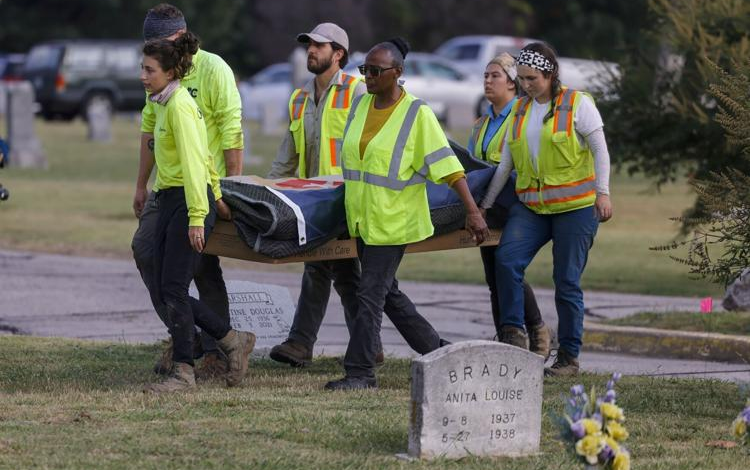First Tulsa Race Massacre Victim Identified Through DNA Genealogy: WWI Veteran C.L. Daniel

News Mania Desk/Agnibeena Ghosh/13th July 2024
Archaeologists have made a significant breakthrough in the ongoing investigation of the 1921 Tulsa Race Massacre, identifying the first victim exhumed from mass graves at Oaklawn Cemetery through DNA genealogy. The city of Tulsa announced on Friday that C.L. Daniel, a Black man in his 20s and a World War I U.S. Army veteran, has been positively identified.
This marks the first identification since Tulsa Mayor G.T. Bynum initiated this phase of the 1921 Graves Investigation five years ago. The investigation aims to identify massacre victims and connect their descendants with those lost during the tragic event.
The identification of Daniel is significant as it is the first outside of those noted in the Oklahoma Commission’s 2001 report. His connection to the massacre was confirmed using records from the National Archives, including a letter from Daniel’s family attorney to the U.S. Veteran’s Administration on behalf of his mother regarding his survivor benefits. The letter explicitly states, “C.L. was killed in a race riot in Tulsa, Oklahoma in 1921.”
Daniel’s historical records indicate that he was in Utah in February 1921, seeking employment and a way to return home to his mother in Georgia. The circumstances of his presence in Tulsa remain unclear, but notes from his mother’s attorney and a U.S. Congressman from Georgia confirm his death in the massacre.
The city of Tulsa is now working to organize a proper burial for Daniel, which will depend on the wishes of his next of kin. Currently, Daniel remains in the spot where he was found in Oaklawn Cemetery. The city is committed to honoring his memory and providing a respectful resting place in accordance with his family’s wishes.
The investigation into the 1921 Tulsa Race Massacre began in earnest in 2018 when Mayor Bynum announced a reexamination of potential graves as identified in the 2001 state-commissioned report. Four sites were identified for examination: Oaklawn Cemetery, Newblock Park, another area near Newblock Park, and Rolling Oaks Memorial Gardens (formerly Booker T. Washington Cemetery).
To ensure transparency and community engagement, a Public Oversight Committee was established. This committee includes descendants of massacre victims and leaders in Tulsa’s Black community, providing input on key decisions throughout the investigation. Additionally, a team of historians and scholars was assembled to offer historical context and aid in the documentation of the findings.
The identification of C.L. Daniel is a poignant reminder of the racial violence and systemic racism faced by Black Americans, including Black WWI veterans. Upon returning from combat, these veterans were met with segregation, racism, and inequality, despite their service to the country. The Equal Justice Initiative reports that Black veterans were often targets of racial violence and discrimination, facing denied medical care and unequal veterans’ benefits.
In 1919, the “Red Summer” saw 25 anti-Black riots across major U.S. cities, including Houston, Chicago, Omaha, and Tulsa. Dr. George Edmund Haynes noted in a 1919 report that the persistent mob mentality among white men during this period fueled a commitment to self-defense among Black men, emboldened by their wartime service.
The 1921 Tulsa Race Massacre remains one of the most devastating instances of racial violence in American history. The efforts to identify and honor the victims are crucial steps in acknowledging this painful past and striving towards a future of understanding and reconciliation. The identification of C.L. Daniel through DNA genealogy marks a significant milestone in this ongoing journey.






